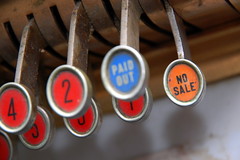Is your email marketing doing more harm than good? Email can be one of the most profitable marketing channels when it’s done correctly. Bad email marketing can hurt your reputation, and get you blacklisted as a spammer.
Nearly every company has a mailing list. And uses it. But not every company uses it well. Are you one of them?
Signs of bad email marketing
The first key component of successful email marketing is a good list. If you built your email marketing list the right way, it can be one of your company’s biggest marketing assets. Imagine, a large built-in audience of people who really want to hear from you, and trust you with their time and email addresses.
Or, it can be a worthless compilation of names, the wrong audience, or people who don’t want to buy anything (and never will).
Signs of a bad email marketing list
- A bunch of names you scraped from website email and contact pages.
First of all, if it says “info@___” or “service@___” it’s likely to be a low-level person with no authority to buy from you.
Secondly, they didn’t ask you to contact them with your offers. Those addresses are there to help their customers (or potential customers), not to field sales pitches.
Don’t start your relationship off on the wrong foot!
- Names on business cards you’ve collected from networking events and speaking engagements.
Conversations with real people are great. So is exchanging cards. Follow up when you get them. Do it a year later, and those people will think you’re spamming them (not helping them).
It’s technically legal under CAN-SPAM to do either of these things. CAN-SPAM isn’t opt-in, it’s opt-out (more about CAN-SPAM rules here). It’s not a good idea though. Do it too often, and your ESP (email service provider, like MailChimp or AWeber) will think you’re a spammer too; and they may threaten to suspend your account.
- Names that you bought (and now “own”)
This applies especially if they were exceptionally cheap (such as $100 for 10,000 names), think services such as SalesGenie.
None of those people asked to be on those lists. Use them, and you’ll get labelled a spammer. There are some email lists available for rent (one-time use), but they’re expensive ($300 for 1,000 names). If it looks too good to be true, it probably is.
- No personalization
Sending out mass emails without any attempt at making a human connection with the people receiving them. At the very least, address them by name.
Addressing the same email to everyone, rather than separating the names by past purchases, what stage they are in the buying process, or even what topics they’re interested in.
How to build a valuable email marketing list
- Add people you spoke to personally, who expressly asked to be on your list
- People who signed up directly from your website, and thereby gave you permission to contact them
- Your existing customers and prospects: people you already have a relationship with (ask them first!)
- Attendees at your webinars
- Make sure you ask everyone for permission to continue to contact them. Offer something in return (a recording, a set of slides, or a white paper).
- Subscribers to your auto-responders. They’ve said they want to hear from you (repeatedly).
All of this can be a lot to digest. If you want to have a quick conversation about this, email me here (no charge).Inboxes are crowded, and people are pressed for time. You want to build a relationship. Get them to know you, like you, and trust you.
Once those people are on your list, nurture them (don’t spam them with offers for expensive products right away). You wouldn’t ask someone you just met to marry you, would you?



